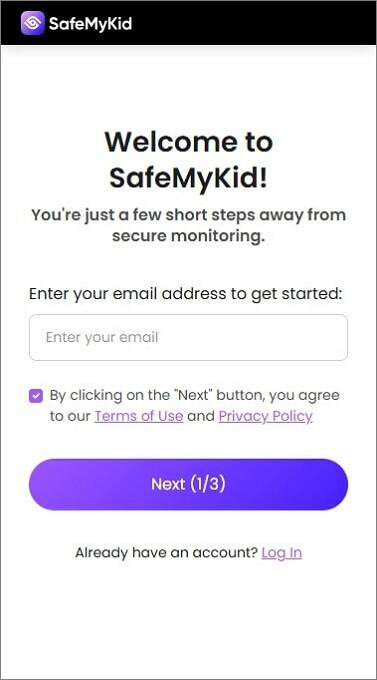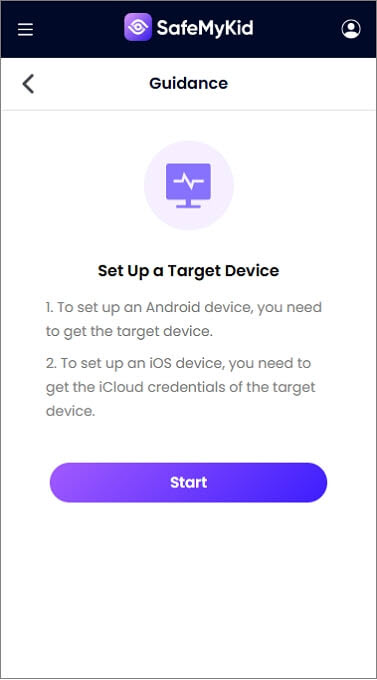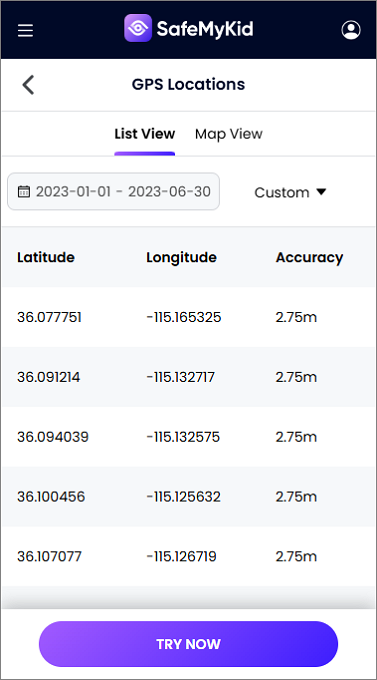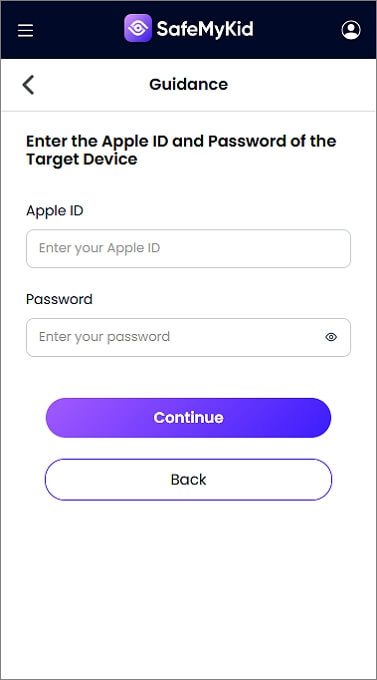IMEI Number Tracking: 5 Best Ways to Track IMEI Numbers

IMEI number tracking offers a way to track a lost or stolen phone and potentially recover it. You can also use IMEI number tracking to know the location of your loved ones.
![]()
In this article, we’ll explore five effective methods to track a lost phone using IMEI. You’ll find the best solution here.
What is an IMEI Number?
An IMEI (International Mobile Equipment Identity) number is a 15-digit unique identifier assigned to every mobile device. It helps differentiate your phone from others, ensuring it can be identified even if the SIM card is changed.
Unlike a SIM card, which is linked to a mobile network, the IMEI number is hardwired into the device’s hardware and cannot be modified easily.
![]()
The IMEI number serves several crucial functions, including:
- Tracking lost or stolen phones – Mobile carriers and law enforcement agencies can use the IMEI to locate and recover stolen devices.
- Blocking stolen phones – Carriers can blacklist an IMEI, making it unusable on any network.
- Verifying device authenticity – Buyers and sellers of second-hand phones can check if a phone is stolen or blacklisted before purchase.
- Managing device security – Some manufacturers and apps use IMEI-based security features to prevent unauthorized access.
How to Find an IMEI Number
![]()
Before losing a phone, it's crucial to note down the IMEI number, as it helps in tracking and blocking the device if needed. Here are the best ways to locate it:
- *Dial #06# – This universal code instantly displays the IMEI on most smartphones.
- Check Phone Settings – Navigate to Settings > About Phone > IMEI Number (exact steps may vary by brand).
- Look at the Device Packaging – Many phones have a sticker with the IMEI on the original box or SIM tray.
- Check Under the Battery (Older Models) – If the phone has a removable battery, the IMEI may be printed underneath it.
- Use a Google or Apple Account:
- For Android Users: Log into Google's Find My Device to check registered devices.
- For iPhone Users: Sign in to your Apple ID at Apple's website and view device details.
How IMEI Number Tracking Works
IMEI (International Mobile Equipment Identity) number tracking works by leveraging cellular networks, databases, and tracking services to locate a lost or stolen phone. Since the IMEI number is a unique identifier assigned to every mobile device, it helps network providers and law enforcement agencies track and blacklist stolen devices.
![]()
Step-by-Step Process of IMEI Number Tracking
IMEI number tracking can be a very useful tool to retrieve your lost device or check up on your loved ones. Below is the step-by-step process of how IMEI number tracking works.
- IMEI Registration in Network Databases
- Every mobile device has a unique IMEI number registered with network providers.
- When a device connects to a network (via SIM card or Wi-Fi), its IMEI is recorded.
- Network-Based Tracking
- When a lost or stolen phone is turned on and connected to a mobile network, the service provider can detect its IMEI number.
- By analyzing the tower location and signals, network providers can estimate the device’s location.
- Law Enforcement and IMEI Databases
- Authorities can access IMEI databases, such as the CEIR (Central Equipment Identity Register) and GSMA's IMEI Database, to check the phone's status.
- If the device is reported lost or stolen, it can be blacklisted, preventing it from being used with any carrier.
- Third-Party IMEI Tracking Services
- Some tracking services and apps allow users to check their IMEI status online.
- These services provide information on whether the phone has been blacklisted or used in another country.
- Blocking and Disabling the Stolen Device
- Once a phone is reported stolen, network providers can remotely disable it using the IMEI number.
- Even if the SIM card is removed or changed, the device remains blocked.
Limitations of IMEI Number Tracking:
Even though IMEI number tracking offers some advantages, it still presents some limitations:
- Cannot track real-time location independently – IMEI tracking requires network support.
- Can be bypassed – Some criminals change or spoof IMEI numbers using illegal software.
- Dependent on carrier cooperation – Only network providers and law enforcement can track IMEI data.
IMEI Tracking vs. GPS Tracking
![]()
IMEI and GPS tracking are two different methods used to locate lost or stolen mobile devices, each with its own strengths and limitations. Understanding the differences can help users determine the best approach for tracking a phone.
The table below compares the features of IMEI and GPS tracking for accuracy and reliability.
| Feature | IMEI Tracking | GPS Tracking |
|---|---|---|
| Accuracy | Less precise (estimates location based on cell towers) | Highly precise (pinpoints location within a few meters) |
| Works without Internet? | Yes (relies on mobile networks) | No (requires an active internet or GPS signal) |
| Works without a SIM card? | No (device must connect to a mobile network) | Yes (if GPS is enabled and connected to Wi-Fi) |
| Tracks in Real-Time? | No (depends on network logs and carrier access) | Yes (continuously updates location if enabled) |
Strengths and Weaknesses of IMEI and GPS Tracking
Below we compare the strengths against the weaknesses of the two methods.
IMEI Tracking Advantages and Disadvantages
Below, we explore the advantages and disadvantages of IMEI tracking to help you understand its effectiveness and limitations.
Advantages:
- Works even if GPS is disabled
- Can block a stolen phone from being used on networks
- Does not require internet access
Disadvantages:
- Not as precise as GPS tracking
- Cannot track a phone in real-time
- It can be bypassed if the IMEI is changed or spoofed
GPS Tracking Advantages and Disadvantages
Below, we examine the advantages and disadvantages of GPS tracking to help you determine its effectiveness for your specific needs.
Advantages:
- Provides real-time, highly accurate location tracking
- Works independently of network providers
- Can be used for navigation and geofencing
Disadvantages:
- Does not work if GPS/location services are disabled
- Requires an internet connection or mobile data for tracking apps to work
- Can drain the battery quickly
When to Use Each Method
Use IMEI tracking if the phone is lost or stolen, and you need to track it through network operators or block its use.
Use GPS tracking for real-time location updates, such as tracking a lost phone via Google Find My Device (Android) or Apple’s Find My iPhone.
While IMEI tracking is effective for locating stolen phones and preventing unauthorized use, GPS tracking is the better option for real-time tracking. Ideally, both methods should be used together for maximum security and recovery chances.
5 Easy Ways to Track a Phone Using IMEI
If you’ve lost your phone or it has been stolen, tracking it using the IMEI number can be an effective solution. Below are five easy ways to track a phone using its IMEI number.
1. Contacting Your Mobile Network Provider
![]()
Your mobile network provider maintains a record of all IMEI numbers connected to their system. By reporting your lost or stolen phone, they can track its last known location, restrict network access, and even blacklist the device to prevent unauthorized use.
How to Track Your Phone with Your Carrier
- Call your mobile provider and provide your IMEI number.
- Request them to trace your phone's last network location.
- Ask for an IMEI block if your phone is stolen.
Pros:
- Reliable and legal tracking option
- Can block stolen phones from accessing networks
Cons:
- Does not provide real-time tracking
- May require police involvement
2. Using the CEIR (Central Equipment Identity Register) Database
![]()
In some countries, like India, the CEIR (Central Equipment Identity Register) database enables users to report stolen phones. Once registered, the device is blacklisted, preventing it from connecting to any network, thereby reducing the chances of resale or misuse.
How to Use CEIR for IMEI Tracking
- Visit your country’s CEIR website.
- Submit a stolen phone report with your IMEI number.
- Authorities will block the IMEI, preventing further use.
Pros:
- Prevents stolen phones from being reused
- Helps law enforcement recover lost devices
Cons:
- Only available in select countries
- Does not provide live location tracking
3. Reporting to Law Enforcement
Law enforcement agencies collaborate with mobile carriers to track and recover stolen phones using IMEI numbers. Reporting your lost device increases the chances of retrieval, as authorities can monitor its network activity and block unauthorized usage.
Steps to Report a Lost Phone to the Police
- File an official report with your local police station.
- Provide details like your IMEI number, phone model, and last known location.
- Authorities will request carrier assistance to track the phone.
Pros:
- Legal and effective for stolen phones
- Helps prevent identity theft
Cons:
- Can take days or weeks
- Not available in all regions
4. Online IMEI Tracking Services
Websites like TrackIMEI.net claim to offer instant IMEI tracking by checking global databases and network records. While some services may provide basic location details, always verify their legitimacy to avoid scams or unauthorized data access.
How Online IMEI Tracking Works
- Visit an IMEI tracking website.
- Enter your IMEI number.
- The service attempts to locate your phone.
![]()
Pros:
- Quick and easy to use
- Works without carrier involvement
Cons:
- Accuracy is not guaranteed
- Some services may be unreliable
5. Checking IMEI Blacklist Status
![]()
You can check if your phone is blacklisted using tools like IMEI.net or your carrier’s website. A blacklisted IMEI means the device is blocked from all networks, making it harder for thieves to use or sell the stolen phone.
Pros:
- Prevents resale of stolen phones
Cons:
- Does not provide real-time tracking
Official vs. Third-Party IMEI Tracking
While IMEI tracking is a powerful tool, there are key differences between official and third-party tracking methods. Understanding these can help you choose the best way to locate your lost device.
Official IMEI Tracking
Official IMEI tracking is conducted through mobile carriers and law enforcement agencies. When you report a stolen phone, authorities work with network providers to track and block the device.
Pros:
- Secure and legal – Approved by government and telecom regulations.
- Permanent blocking – Prevents unauthorized use by blacklisting the IMEI.
Cons:
- Slow process – Requires filing a police report, which can take time.
- Limited accessibility – Only available in certain countries with IMEI tracking databases.
Third-Party IMEI Tracking
Third-party IMEI tracking services, such as online tools and mobile apps, claim to locate lost phones using IMEI numbers. These services often operate independently of mobile carriers.
Pros:
- Fast and easy to use – No need for police reports or network provider approval.
- Accessible worldwide – Works in regions where official IMEI tracking is unavailable.
Cons:
- Accuracy issues – Third-party tools may not provide real-time locations.
- Security risks – Some services may require sensitive information, posing privacy concerns.
Unlike IMEI tracking, SafeMyKid provides instant live tracking without delays. With SafeMyKid, you get a faster, more reliable solution to track lost or stolen phones effortlessly.
The Best IMEI Number Tracking Alternative - SafeMyKid
If you're looking for a fast and reliable way to track your lost or stolen phone in real time, SafeMyKid is the best solution.
Unlike IMEI tracking, which depends on carrier networks and law enforcement, SafeMyKid provides instant GPS tracking, ensuring you can locate your device without delays.
With advanced tracking features, it offers a seamless and effective way to monitor your phone’s location.

Why Choose SafeMyKid Instead of IMEI Number Tracking?
While IMEI tracking helps locate stolen devices through mobile networks, it has limitations—it requires carrier cooperation and does not provide real-time updates. SafeMyKid offers a more advanced and user-friendly alternative with instant tracking and additional security features.
- Live GPS Tracking – Get real-time updates on your phone’s exact location, unlike IMEI tracking, which only logs the last known network connection.
- Geofencing Alerts – Set virtual boundaries and receive notifications when the phone enters or leaves a specific area.
- Cross-Platform Support – Works on both Android and iPhone, offering flexibility beyond carrier-based IMEI tracking.
- Location History – View past movement records to track where the phone has been.
- Remote Monitoring – Access tracking features from any device via the SafeMyKid app or web portal.
With SafeMyKid, you get more than just location tracking—you gain full control over your device’s security, ensuring better protection than IMEI-based tracking alone.
How to Track a Phone Using SafeMyKid
Unlike IMEI tracking, which relies on network carriers, SafeMyKid provides an easy and instant way to track your phone in real time. Whether you use Android or iPhone, setting up SafeMyKid is quick and hassle-free.
How to Track an Android Phone Location
Step 1. Sign Up
Create an account on the SafeMyKid website.

Step 2. Install and Set Up SafeMyKid Android App
Install SafeMyKid on the target device. Follow on-screen instructions to allow location tracking.

Step 3. Start Tracking Android Phone Location
Monitor the real-time location from the SafeMyKid online dashboard.

How to Track an iPhone Location
Step 1. Sign Up
Create a SafeMyKid account, and access SafeMyKid from any device.

Step 2. Enter iCloud Details
Input the target iPhone’s iCloud credentials. No app installation is required!

Step 3. Track iPhone Location
Receive real-time location updates on your SafeMyKid online dashboard.

Unlike IMEI tracking, which often requires cooperation from mobile carriers and law enforcement, SafeMyKid provides instant tracking without any delays.
It does not rely on network providers to trace your device, allowing you to locate your phone in real time. With SafeMyKid, you have full control over tracking without depending on third-party approvals.
FAQs on IMEI Number Tracking
When it comes to tracking a lost or stolen phone, many users have common concerns about how IMEI tracking works. Below are answers to frequently asked questions.
1. Can IMEI tracking work if my phone is turned off?
IMEI tracking relies on a device being connected to a mobile network. If your phone is turned off, it cannot be actively tracked until it is switched on and connected to a network. However, law enforcement and mobile carriers can detect the last known location before it is powered off.
- Is IMEI tracking legal, and who is authorized to use it?
IMEI tracking is legal when used by authorized entities, such as mobile carriers, law enforcement, and government agencies, to locate lost or stolen devices. Individuals cannot track a phone using IMEI on their own—they must go through official channels.
3. Can I track someone else's phone using their IMEI number?
No, you cannot legally track someone else’s phone using their IMEI number unless you have explicit permission and are using an approved service. IMEI tracking is meant for recovering lost or stolen devices, not for monitoring someone’s location without their consent.
4. Will resetting my phone remove the IMEI number or make tracking impossible?
No, performing a factory reset does not change or erase the IMEI number, as it is embedded in the phone’s hardware.
However, if a thief flashes a new IMEI (which is illegal in many countries), it can make tracking more difficult. This is why SafeMyKid is a better alternative since it tracks via GPS, unaffected by IMEI changes.
5. How do blacklisted IMEI numbers affect a phone’s usability?
When a phone is reported stolen and its IMEI is blacklisted, it cannot connect to any network in the country where it was blacklisted. This prevents the thief from making calls, using mobile data, or selling the device for normal use.
6. Are there risks associated with using third-party IMEI tracking websites?
Yes, many online IMEI tracking websites are unverified and may pose risks such as data theft or scams. Some sites claim to provide real-time IMEI tracking but instead collect user data for malicious purposes.
7. Can thieves bypass IMEI tracking, and how can I improve my phone’s security?
Yes, experienced thieves can bypass IMEI tracking by flashing a new IMEI or using the phone in offline mode. To improve security:
- Enable Find My Device (Android) or Find My iPhone (iOS)
- Use a tracking app like SafeMyKid for real-time GPS monitoring
- Lock your phone with a strong PIN, fingerprint, or face unlock
- Report the loss to your carrier immediately to block the IMEI
Conclusion
IMEI number tracking is useful, but it has limitations. For instant phone tracking, SafeMyKid is the most reliable solution. It provides real-time location tracking without any hassle.
If you ever lose your phone, try one of these methods—and consider using SafeMyKid for fast and effective tracking.

